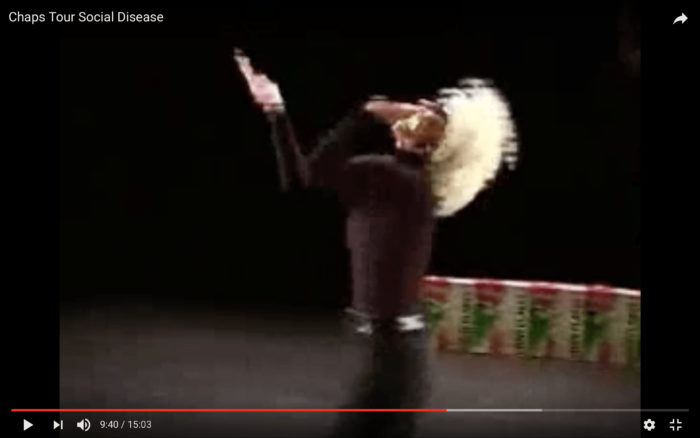Response 9 - Folding Time
Dear Alan,
I knew quite quickly which piece I wanted to work with. I chose the performance ‘Social Disease’ choreographed by Gary Clarke which I performed in 2006 with the dance company Ascendance Rep (‘Social Disease’ was one of three pieces as part of an evening show). Perhaps my choice was influenced by your interest in this choreography when I showed it to you some years ago, or perhaps I was drawn to it by the challenge of re-enacting a performance as specific and detailed as this (‘Social Disease’ was created from pictures of models posing in glossy magazines and was very fast). Curiously, this work had been performed previously by the same dance company but with different dancers only a year earlier. So actually, my re-enactment in Horsens in 2018 was a reenactment of a reenactment! This meant that when I found the Youtube clip of the piece and started to recall some of the movements it was the second time I learned the choreography from watching it on a screen.
Folding time in the body
The act of recreating the movements in my body was a slow process and by no means did I execute the steps accurately. But in the repetition of the movements my body slowly fell into the memory of the choreography which felt hidden inside me. For each time I watched it and practiced it new details revealed themselves in my body. There were a few particular movements that were very awkward to do, as in the image below - torquing the body in one direction while the hands were creating a cup shape over the head with shoulders out of line (and the choreographer was very specific about how to perform them) and I could feel my muscles contract to accommodate the positions in a most familiar way.

Screengrab showing me performing awkward choreography
Certainly, I experienced the many layers of repetition you quote from Schneider. Repetition is the materiality of choreography, practicing steps to commit them to body memory. It is also the choreographer’s artistic choice in this piece and it is the performance by a 26-year-old body recreated by a 38-year-old body. More could be said about the costume and hair/wig and the setting of the piece, but I will leave my reflections of the (re)embodiment of the piece here.
Folding time on screen
Constructing a record where the two happenings were folded together opened another dimension of ‘folded time’. The 2006 production from Halifax was an edited version meant for promotion and when I am not in the frame, I have no recollection of what the choreography was. These moments left me with gaps in my body memory which meant that my re-enactment in Horsens had ‘pauses’ of ‘inaction’ which shows in the footage from this happening: Sometimes I am simply staring at my computer screen, where the Halifax version is playing, waiting to recognise steps. My solution to this problem, when I juxtaposed the two happenings in the video, was to ‘patch up’ the gaps. The original choreography was constructed around repetition, so I tried to fill the gaps of my 2018 re-enactment by copying and pasting footage from earlier or later in the same footage to assemble the choreography. As the task directed my attention to the ‘time’ aspect of the work, I became aware of how this editing technique folded timings to correct my sketchy 2018 rendition of the original 2006 version in order to match the movement. The iconic song ‘I'm Waiting for the Man’ by The Velvet Underground & Nico serves as linear time and the steady pulse the dancers are trying to keep up with while framing the irregular passing of time in the images.
